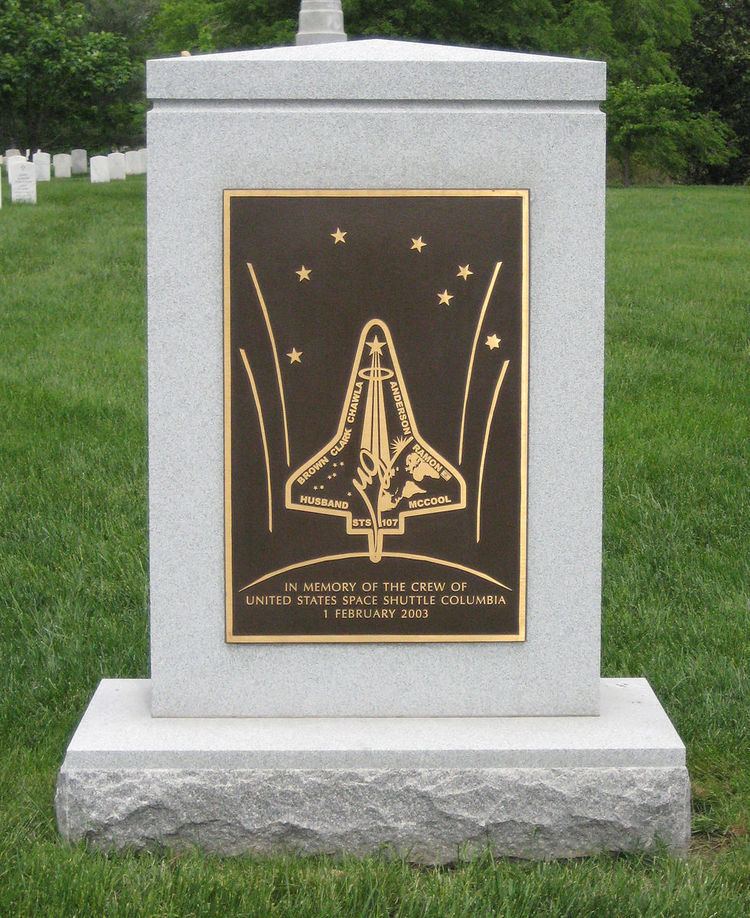 | ||
The Columbia Accident Investigation Board (CAIB) was convened by NASA to investigate the destruction of the Space Shuttle Columbia during STS-107 upon atmospheric re-entry on February 1, 2003. The panel determined that the accident was caused by foam insulation breaking off from the external fuel tank, forming debris which damaged the shuttle's wing; and that the problem of "debris shedding" was well known but considered "acceptable" by management. The panel also recommended changes that should be made to increase the safety of future shuttle flights. The CAIB released its final report on August 26, 2003.
Contents
Major findings
The board found both the immediate physical cause of the accident and also what it called organizational causes.
Immediate cause of the accident
82 seconds after launch a large piece of foam insulating material, the "left bipod foam ramp", broke free from the external tank and struck the leading edge of the shuttle's left wing, damaging the protective carbon heat shielding panels.
During re-entry into the Earth's atmosphere, this damage allowed super-heated gases to enter and erode the inner wing structure which led to the destruction of Columbia. It was the seventh known instance of a piece of foam, from this particular area of the external tank, breaking free during launch.
Organizational cause of the accident
The problem of debris shedding from the external tank was well known and had caused shuttle damage on every prior shuttle flight. The damage was usually, but not always, minor. Over time, management gained confidence that it was an acceptable risk. NASA decided that it did not warrant an extra EVA for visual inspection, feeling that it would be like a car going down a highway and hitting a Styrofoam cooler.
Board recommendations
The board made 29 specific recommendations to NASA to improve the safety of future shuttle flights. These recommendations include:
Only two further Space Shuttle missions were allowed to be flown before the implementation of these recommendations.
Shuttle program after the CAIB report
After the CAIB report came out, NASA implemented all recommended changes and flew its first post-Columbia mission in 2005. As part of the CAIB recommendations, the Shuttle carried a 50-foot inspection boom attached to the robot arm, which was used within 24 hours of launch to check the orbiter for damage. As all but one of the post-Columbia missions were concentrated on the International Space Station, primarily to provide a "safe haven" in the event an orbiter was damaged beyond the normal repair methods, NASA implemented a STS-3xx contingency mission program that could launch a rescue orbiter on short notice, similar to the Skylab Rescue that was planned during the Skylab program.
NASA retired the Space Shuttle fleet on July 21, 2011 after completing the ISS and the final flight and subsequent landing of Atlantis. The Shuttle's replacement, Orion, was to have consisted of an Apollo-derived spacecraft launched on the Ares I rocket, which would use a Space Shuttle Solid Rocket Booster as its first stage. Orion would not face the dangers of either an O-ring failure (due to the presence of a launch escape system) or shedding foam (as the spacecraft would be launched in a stack configuration). In addition to ferrying crews to the ISS, the Orion spacecraft was to (as part of Project Constellation) allow NASA to return to the Moon. President Obama signed the NASA Authorization Act 2010 on October 11 which officially brought the Constellation program to an end, replacing it with the Space Launch System (SLS) and Multi-Purpose Crew Vehicle (MPCV) programs to develop the launch vehicle and spacecraft to enable human exploration missions beyond low-Earth orbit.
Board members
Chairman of the board
Board members
